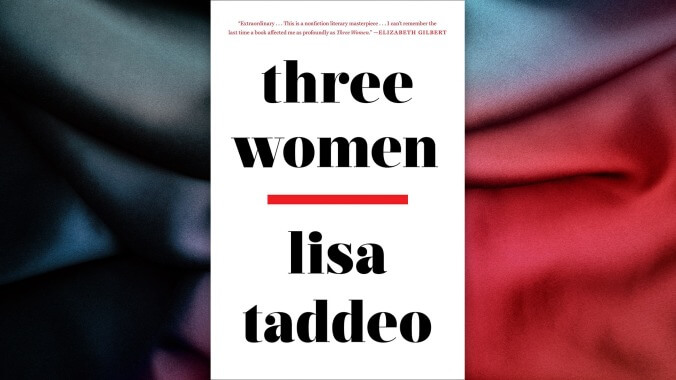In the backroom of a doctor’s office in rural Indiana, eight women, a weight loss group, sit around a large mahogany table drinking chardonnay. The conversation has turned to sex. Lina, a mother of two young children, is married to Ed, who hasn’t French kissed her in 10 years, the thing she wants more than anything in the world. She’s unhappy but doesn’t have any money with which to leave him. But, she tells the room, something’s happened. She’s having an affair. A hush falls, the wine is passed, and the other women lean into the “guilty attraction” of Lina’s story. “Let me tell y’all,” she says, “about this man.”
The reader of journalist Lisa Taddeo’s nonfiction debut, Three Women, which in part chronicles Lina’s affair, may experience a similar thrill as the listeners in that room—of eagerly awaiting the details of a titillating story. This highly anticipated volume explores female desire and its attendant, tangled emotional landscapes, as told through the experiences of three American women. Alternating chapters among the subjects, with whom Taddeo spent “thousands of hours” across eight years, the book progresses mostly chronologically, from their adolescence, on. There’s Maggie, who enters into a relationship with her English teacher when she is in high school; Sloane, a beautiful, confident restaurateur whose husband likes to watch her have sex with other people; and Lina.
With the exception of the prologue and epilogue, Taddeo orients the narrative in an extraordinarily close third- and occasionally second-person point of view, her elastic prose tightening and loosening around her subjects’ voices. Especially with Maggie and Lina, whose longings are portrayed as so strong as to become all-consuming, Three Women can read like a transcript of their emotions. Maggie, a child of alcoholic parents, is presented as especially susceptible to the alleged advances of Aaron, her married teacher who begins texting her while she is a high school senior in Fargo, North Dakota. For her, the relationship is nothing but a caring one, her passages underscoring how such abuses of power can look and sound so much like love, the two often sharing the same intoxicating language. Lina, in her own secret relationship, carefully calibrates her actions toward her married lover, lest he become skittish or bored. Through the two of them, Taddeo makes palpable the pangs of yearning, and how it can feel to have one’s needs long go unfulfilled and then at last satisfied. “She was dead for so many years, or slowly dying, and now she has come back to life,” Taddeo writes of Lina’s affair. For Sloane, although her chef husband frequently chooses her sexual partners for her, the power in her relationship is more evenly distributed. What results is an unspoken acknowledgment of just how complex sex is, and that by engaging in those complexities, the pair is able to unlock a greater pleasure: “It was hedonistic and also caring.”
Taddeo has a strong sense of storytelling, setting hooks in each woman’s early chapters before circling back and unfolding their narratives with greater depth. Her short, punchy sentences, eye for telling details, and the wellsprings of conveyed emotion make for a charged, heady read. But such depth perhaps prohibits a greater breadth of stories told. The three central women are white, mostly heterosexual (while Sloane occasionally sleeps with women, she doesn’t explicitly identify as bisexual), and younger than 40 when Taddeo meets them, a view that appears especially limited when one considers the wide net the author cast in looking for her subjects. In addition to posting on Facebook, Craigslist, and other message boards, she crisscrossed the country six times, handing out her business card and posting fliers in grocery stores, coffee shops, and gas stations, and would eventually interview hundreds of women before settling on the final three.
Three Women is therefore best when taken as a very close study of a few particular individuals, as opposed to a broader treatise on female desire and sexuality. Today, women talking about sex is less transgressive than the marketing and press surrounding the book might suggest, and treating it as such gives more power to an outdated way of thinking—that sexuality, and female sexuality in particular, is rigid and shameful, which Taddeo seems to be trying to refute. These pages don’t reveal new truths so much as reinforce old ones. One pervasive theme is that because women have been taught to put others’ feelings before their own, they frequently settle for less than what they need or deserve, and often find it necessary to treat even accomplished, confident men with kid gloves. There is also this: “For some women, preparing to meet a lover is nearly as hallowed a time as the actual meeting”—a sentiment perhaps anyone, including the readers of this book, can identify with. For those in such a state of fevered anticipation, what’s to come is still perfect, teeming with pristine possibility, not yet muddled by messy reality.

